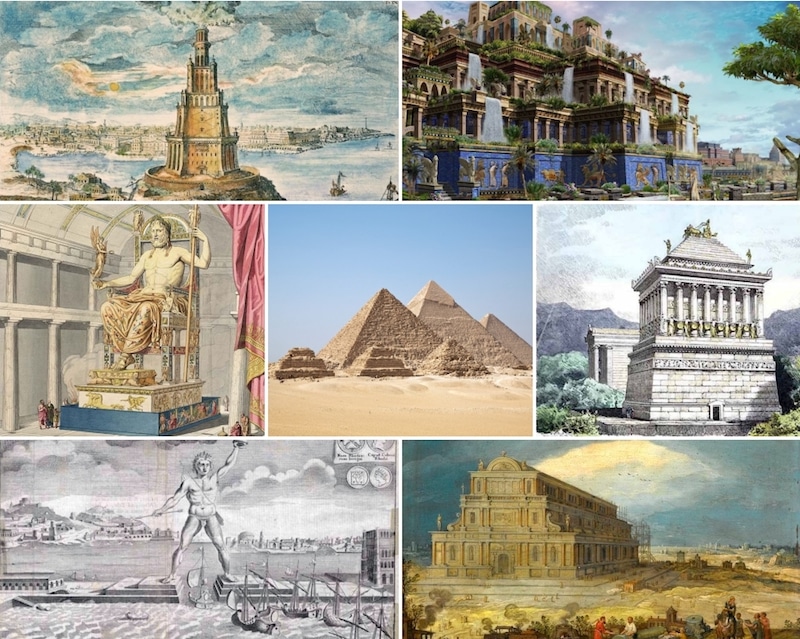
There are numerous lists of “Wonders of the World” that have been compiled and debated over from ancient to modern times, and which contain both natural and man-made structures. But do you know which are generally agreed to have been included in the original Seven Wonders of the Ancient World?
Painstakingly built by the people of the ancient Mediterranean and Middle Eastern empires, the famous Seven Wonders of the Ancient World have been celebrated for centuries as architectural and artistic marvels. Given the crude tools available and the massive amount of manual labor these must have required, they truly are monuments of human achievement. Only one still stands today, while the rest have all been destroyed, mostly by natural disasters.
Where did this list come from? Historians say that the first surviving record of the Seven Wonders of the Ancient World was compiled by the Greek writer Antipater of Sidon in a poem in 140 BC:
I have set eyes on the wall of lofty Babylon on which is a road for chariots, and the statue of Zeus by the Alpheus, and the hanging gardens, and the Colossus of the Sun, and the huge labour of the high pyramids, and the vast tomb of Mausolus; but when I saw the house of Artemis that mounted to the clouds, those other marvels lost their brilliancy, and I said, 'Lo, apart from Olympus, the Sun never looked on aught so grand.'
Later, the “wall of lofty Babylon” was replaced with the Lighthouse of Alexandria, and this became the most widely accepted list. Antipater and others, including Philo of Byzantium, Strabo, Herodotus and Diodoros of Sicily, are responsible for providing the descriptions of these sites. It is from their writings that we’ve learned much of our current knowledge about the seven wonders.
In our studies of ancient history, perhaps you’ve read about some of these structures (like the massive pyramids) and wondered which of these were included in the original list of the Seven Wonders of the Ancient World? Let’s find out!
Here’s the list, in chronological order starting with the oldest:
The Pyramids of Giza:
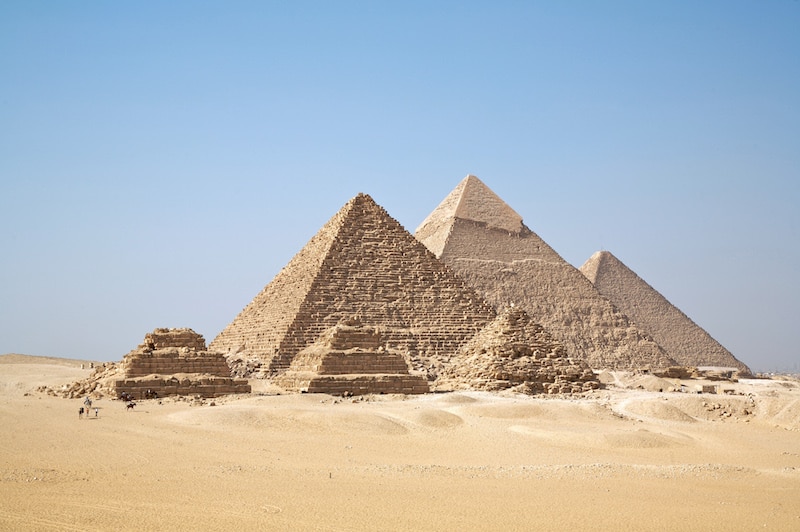
{photo by Ricardo Liberato on Wikimedia Commons / CC BY-SA 2.0}
Located in Egypt, built about 2600 B.C.
We are pretty familiar with these enormous tombs of Egyptian pharaohs by now! The largest of these pyramids, the tomb of Khufu, was the tallest structure in the world until the 19th century. This is the only ancient wonder from the list that still exists today.
Hanging Gardens of Babylon:
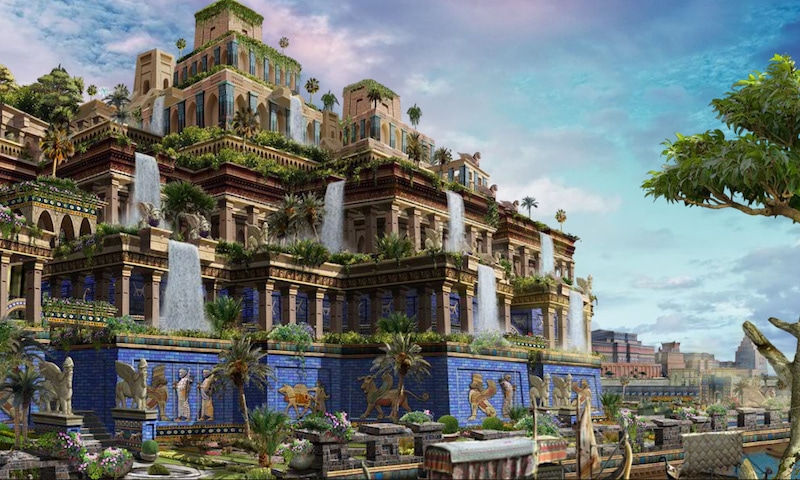
{photo by Fantasy Art on flickr / CC BY-NC-ND 2.0}
Located in Iraq, date unknown
These famed gardens were possibly built by the Babylonian King Nebuchadnezzar II around 600 B.C. or by the Assyrian King Sennacherib around 700 B.C. But apparently there’s no archaeological evidence to prove the gardens actually existed, and some experts believe they did not.
Temple of Artemis at Ephesus:
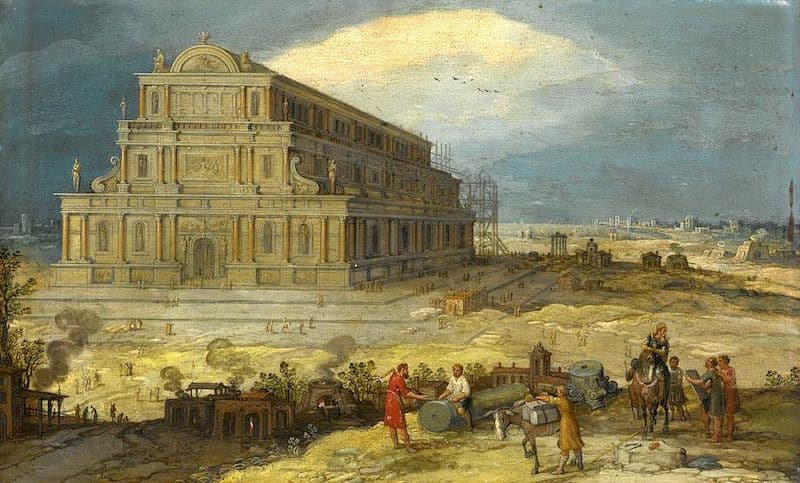
{Public domain photo via Wikimedia Commons}
Located in Turkey, built in the Sixth century B.C.
This impressive temple was built to honor the Greek goddess of hunting, Artemis. Historians say there was a series of three temples built on this site. The first was destroyed by a flood, the second by a fire, and then a third was destroyed in 262 A.D. by invading Goths.
Statue of Zeus:
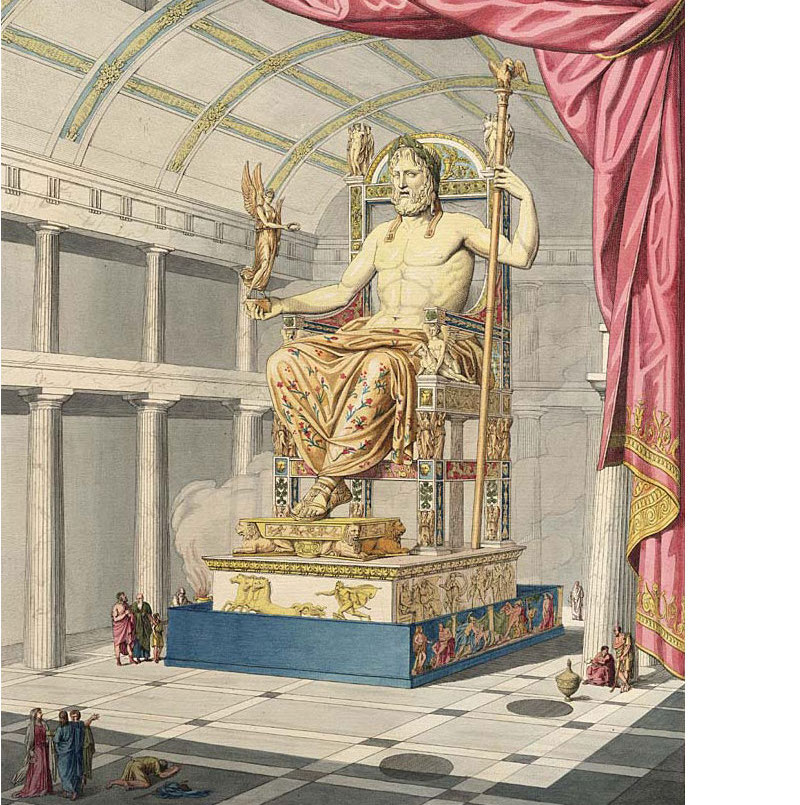
{Public domain photo via Wikimedia Commons}
Located in Greece, built in the Fifth century B.C.
Created by the famous Athenian sculptor Phidias, this statue of gold, ivory, and wood stood over 40 feet tall and depicted the king of the Greek gods, Zeus, seated on a cedar throne. It is believed to have been destroyed in a fire in 462 A.D.
Mausoleum at Halicarnassus:
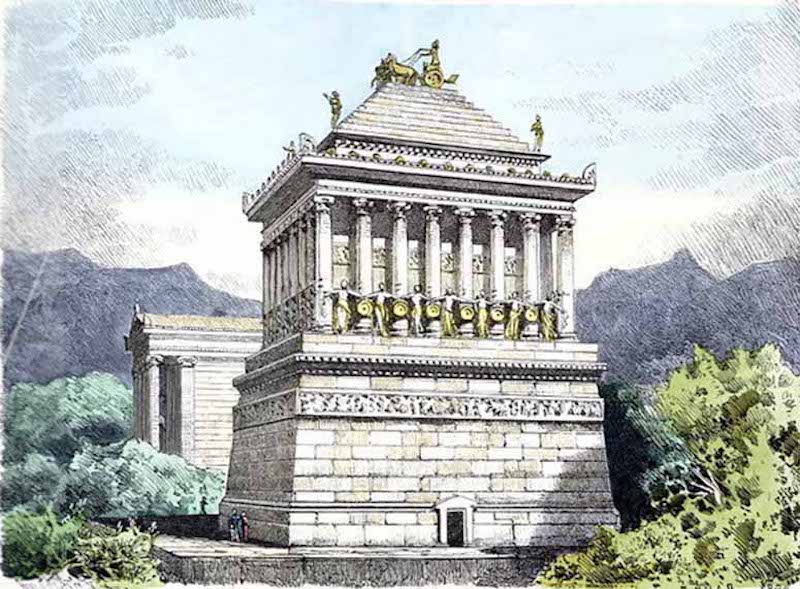
{Public domain photo via Wikimedia Commons}
Located in Turkey, built in the Fourth century B.C.
This elaborate tomb was designed for the Persian king Mausolus by his wife. It was demolished by an earthquake in the 13th century, making it the most recent of the ancient wonders to be destroyed. Fragments of the tomb have been preserved in Turkey and in London’s British Museum.
Colossus of Rhodes:
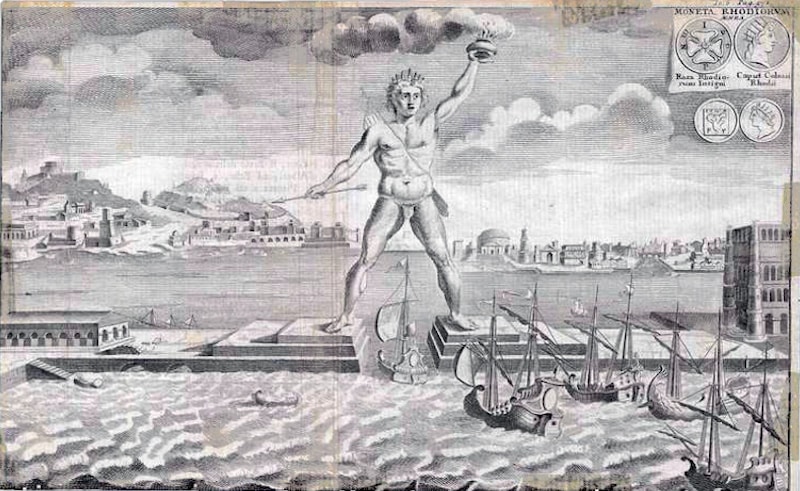
{Public domain photo via Wikimedia Commons}
Located in Rhodes, an island in the Mediterranean Sea, and built in the Third century B.C.
This massive bronze sculpture of the Greek sun god, Helios, stood beside the city's harbor. It was about 100 feet tall, nearly the same size as the Statue of Liberty. The statue was destroyed in an earthquake in 226 B.C.
Lighthouse of Alexandria:
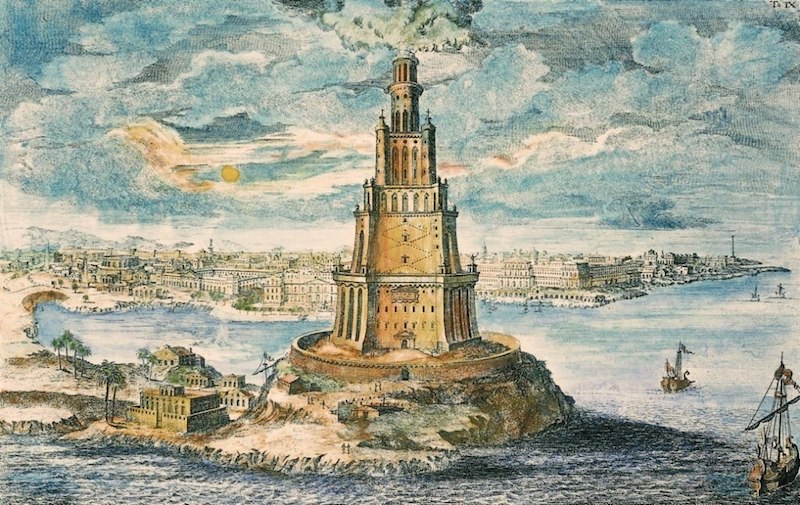
{Public domain photo via Wikimedia Commons}
Located in Egypt, built in the Third century B.C.
Standing around 400 feet tall, this is considered the world’s first lighthouse. Mirrors were used to reflect sunlight for miles out to sea, helping to guide Nile River ships in and out of Alexandria’s busy harbor. The structure slowly fell into ruin from numerous earthquakes between 956 and 1323 A.D., and some of its remains have been found at the bottom of the Nile river.
Find a nice map of where the Seven Wonders were located here.
And if you’re wondering what the Seven Wonders of the Modern World are, as well as the Seven Natural Wonders of the World, and the “New” Seven Wonders of the World, read about them here.











